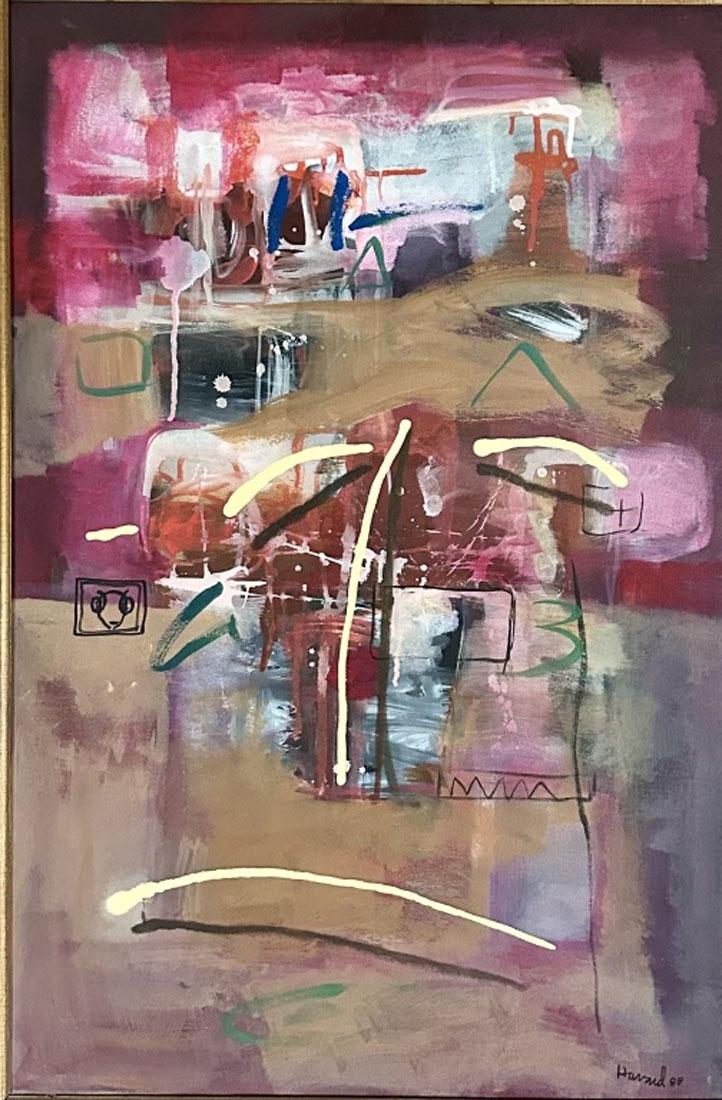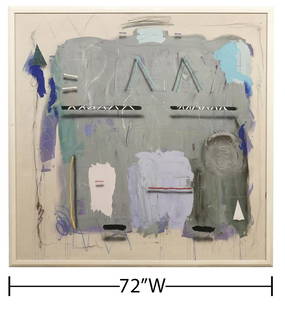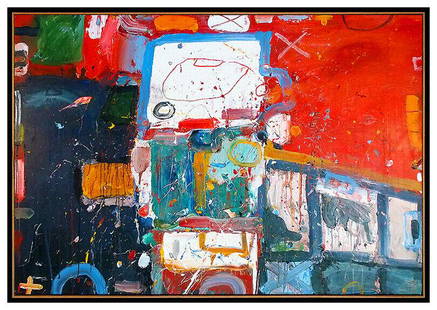
JAMES HAVARD LARGE ACRYLIC ON CANVAS (1937-2020)
James Havard Sale History
View Price Results for James Havard


Related Paintings
More Items from James Havard
View MoreRecommended Art
View More





Item Details
Description
Attributed to James Havard, no coa, private collection, medium: acrylic measurements: 32"wx44"h framed, mint condition Biography: James Havard was an American painter and sculptor. He was a pioneer of abstract illusionism in the 1970s. In the 1980s he changed his style into a form of abstract expressionism influenced by Native American and tribal cultures as well as outsider art. James Pinkney Havard was born in Galveston, Texas, in 1937.[3] He received a bachelor of science degree in art from Sam Houston State College (now Sam Houston State University) in Huntsville, Texas, in 1959. From 1961 to 1965 he studied at Pennsylvania Academy of Fine Arts in Philadelphia, Pennsylvania. There he was influenced by realist painters Ben Kamihira and Hobson Pittman. His career can be divided into three broad periods: realism (1960s), abstract illusionism (1970s), and abstract expressionism with tribal and outsider influences (1980s and beyond). “His early work was . . . realistic and traditional, including landscapes, churches, and figuration much in the same styles as Camille Corot, Édouard Manet, and Edgar Degas.”Beginning in 1967, he broke away from realism and went through a period of experimentation with various abstract and contemporary styles (e.g., monochromatic paintings).[By the late 1970s Havard was considered one of the founders of abstract illusionism along with Al Held, Jack Lembeck, John Clem Clarke, George D. Green, and Tony King. His work during this period is characterized by pastel colors, “optical illusions and combinations of gesso wipes, chalk scrawls, incised lines, and squirts of paint directly from the tube.”In 1976, one art critic wrote of his paintings, "Though conceived to fool the eye, Havard's paintings are at once daring and subtle, complex in scheme and simplistic in symbolic reference." He moved to New York in 1977 and took frequent trips to Santa Fe, New Mexico, beginning in 1978. In New York, his color palette darkened and his works became richer in texture. He began including Native American images and Native American words (e.g., mimbres) inscribed in loose script as well as random numbers.During the 1980s Havard’s paintings began to include thicker layers of paint, more collage elements, and fewer squiggles of paint and optical illusions. He moved to Santa Fe in 1989 where he continued to develop his style, ultimately freeing himself from all references to abstract illusionism. His later paintings have fewer overt tribal references and are smaller in size than many of his earlier pieces. One critic accused Havard's paintings of "display[ing] the female body with what comes off as a misogynistic vigor."[9] Havard began to use an encaustic medium that allowed him to incise the surface of the painting which gave them a carved, luminous appearance.His palette varies from dark, rich, and contrasting colors to bright blues and reds. Rich textures and visually arresting but crudely rendered figures define his work. Many of his paintings seem visually dense.
Buyer's Premium
- 20%
JAMES HAVARD LARGE ACRYLIC ON CANVAS (1937-2020)
Estimate $1,500 - $4,000
3 bidders are watching this item.
Shipping & Pickup Options
Item located in Tampa, FL, usOffers In-House Shipping
Local Pickup Available
Payment
Accepts seamless payments through LiveAuctioneers

TOP





























![Andrew Keating (Washington) Large Acrylic/Canvas: Andrew Keating (Washington) Large Acrylic/Canvas [Scourge, 1984]. Measures 60 x 60 inches. Excellent condition. Provenance: Estate of David Milot. David was a Real Estate Broker by trade and a passion](https://p1.liveauctioneers.com/5755/278851/146721766_1_x.jpg?height=310&quality=70&version=1676336215)
















































